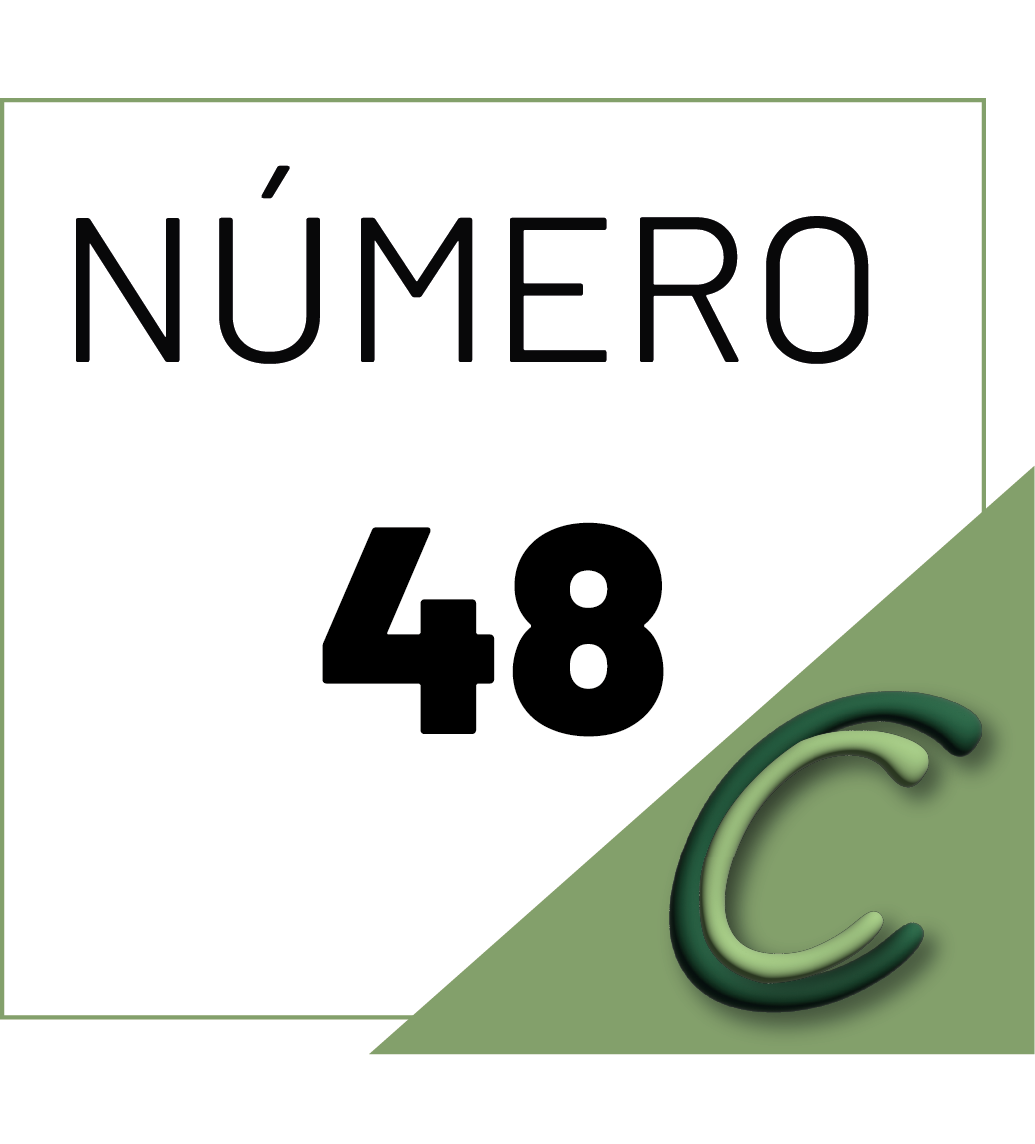Determinantes de las designaciones de ministros de la Suprema Corte de Justicia de México, 1995-2021
La reforma judicial de 1994 consolidó a la Suprema Corte de México como órgano de justicia constitucional. Desde su entrada en vigor y hasta 2021, las veintisiete vacantes que se abrieron en el tribunal han sido cubiertas con un procedimiento en el que las nominaciones corresponden a la Presidencia de la República, y las designaciones, al Senado. ¿Qué factores han influido en los resultados de estos procesos de designación? Este trabajo ofrece una respuesta a partir de una sistematización original del universo de designaciones efectuadas en el periodo 1995-2021. En línea con la literatura comparada sobre nombramientos judiciales, el trabajo concluye que han sido determinantes tanto los elementos de entorno político, como las características de las personas nominadas.
Detalles del artículo
Uso de licencias Creative Commons (CC)
Todos los textos publicados por el Cuestiones Constitucionales. Revista Mexicana de Derecho Constitucional sin excepción, se distribuyen amparados con la licencia CC BY-NC 4.0 Internacional, que permite a terceros utilizar lo publicado, siempre que mencionen la autoría del trabajo y la primera publicación en esta revista. No se permite utilizar el material con fines comerciales.
Derechos de autoras o autores
De acuerdo con la legislación vigente de derechos de autor el Cuestiones Constitucionales. Revista Mexicana de Derecho Constitucional reconoce y respeta el derecho moral de las autoras o autores, así como la titularidad del derecho patrimonial, el cual será transferido —de forma no exclusiva— a Cuestiones Constitucionales para permitir su difusión legal en acceso abierto.
Autoras o autores pueden realizar otros acuerdos contractuales independientes y adicionales para la distribución no exclusiva de la versión del artículo publicado en Cuestiones Constitucionales. Revista Mexicana de Derecho Constitucional (por ejemplo, incluirlo en un repositorio institucional o darlo a conocer en otros medios en papel o electrónicos), siempre que se indique clara y explícitamente que el trabajo se publicó por primera vez en Cuestiones Constitucionales.
Para todo lo anterior, deben remitir la carta de transmisión de derechos patrimoniales de la primera publicación, debidamente requisitada y firmada por las autoras o autores. Este formato debe ser remitido en PDF a través de la plataforma OJS.
Derechos de lectoras o lectores
Con base en los principios de acceso abierto las lectoras o lectores de la revista tienen derecho a la libre lectura, impresión y distribución de los contenidos de Cuestiones Constitucionales por cualquier medio, de manera inmediata a la publicación en línea de los contenidos. El único requisito para esto es que siempre se indique clara y explícitamente que el trabajo se publicó por primera vez en Cuestiones Constitucionales. Revista Mexicana de Derecho Constitucional y se cite de manera correcta la fuente incluyendo el DOI correspondiente.

Esta obra está bajo una licencia internacional Creative Commons Atribución-NoComercial 4.0.
Citas
Abraham, H. (1992). Justices and Presidents. A Political History of Appointments to the Supreme Court. Oxford University Press.
Asmussen, N. (2011). “Female and Minority Judicial Nominees: President’s Delight and Senators’ Dismay?”. Legislative Studies Quarterly. XXXVI (4). Disponible en: https://doi.org/10.1111/j.1939-9162.2011.00028.x.
Astudillo, C. (2009). “Comentario al artículo 95”. En Carbonell, Miguel (coord.). Constitución Política de los Estados Unidos Mexicanos. Comentada y concordada. 20a. ed. México: Porrúa-UNAM.
Astudillo, C. (2010). “El nombramiento de los ministros de la Suprema Corte de Justicia en México”. En Bogdandy, A. von, et al. (coords.). La justicia constitucional y su internacionalización. ¿Hacia un ius constitutionales commune en América Latina? México: UNAM, Instituto de Investigaciones Jurídicas. Disponible en: https://archivos.juridicas.unam.mx/www/bjv/libros/6/2894/16.pdf.
Astudillo, C. y Estrada Marún, J. A. (2019). Nombramiento de ministras y ministros de la Suprema Corte de Justicia de la Nación. En el contexto de los modelos de designación en el derecho comparado. México: Porrúa-IMDPC.
Banks, C. y O’Brien, D. (2015). The Judicial Process. Law, Courts, and Judicial Politics. Thousand Oaks, CA, Sage.
Barragán, J. (2006). “El regreso de la justicia de amparo al conocimiento de la materia electoral”. Justicia Constitucional Electoral. México: UNAM. Disponible en: http://ru.juridicas.unam.mx/xmlui/handle/123456789/59187.
Binder, S. (2001). “The Senate as Black Hole? Lessons Learned from the Judicial Appointments Experience”. En Mackenzie, C. (ed.). Innocent Until Nominated: The Breakdown of the Presidential Appointments Process. Washington, D. C.: Brookings Institution Press.
Binder, S. y Maltzman, F. (2013). “Advice and Consent: The Politics of Confirming Federal Judges”. En Oppenheimer, B. y Dodd, L. (eds.). Congress Reconsidered. Washington D. C.: CQ Press.
Bonifaz, L. (2017). La división de poderes en México. Entre la política y el derecho. México: Fondo de Cultura Económica.
Botero, C. et al. (2019). Informe final del panel de expertos para la elección de ministra/o de la Suprema Corte de Justicia de México. México: Fundación para el Debido Proceso (DPLF). Disponible en: http://www.dplf.org/es/resources/informe-final-del-panel-internacional-de-expertos-para-la-eleccion-de-ministrao-de-la-0.
Cabrera, L. (1998). La Suprema Corte de Justicia durante los gobiernos de Portes Gil, Ortiz Rubio y Abelardo L. Rodríguez (1929-1934). México: SCJN. Disponible en: http://sistemabibliotecario.scjn.gob.mx/sisbib/2018/000291316/000291316_T1.pdf.
Caldeira, G. y Wright, J. (1998). “Lobbying for Justice: Organized Interests, Supreme Court Nominations, and the United States Senate”. American Journal of Political Science. 42 (2). Disponible en: https://doi.org/10.2307/2991768.
Cameron, C. et al. (1990). “Senate Voting on Supreme Court Nominees: A Neoinstitutional Model”. American Political Science Review. 84 (2). Disponible en: https://doi.org/10.2307/1963533.
Camp, R. A. (2011). Mexican Political Biographies, 1935-2009. University of Texas Press. Disponible en: https://utpress.utexas.edu/books/camme3.
Castagnola, A. y López Noriega, S. (eds.) (2016). Judicial Politics in Mexico: The Supreme Court and the Transition to Democracy. Nueva York: Routledge.
Clark, M. (2004). “One Man’s Token is Another Woman’s Breakthrough? The Appointment of the First Women Federal Judges”. Villanova Law Review. 49 (3). Disponible en: https://digitalcommons.law.villanova.edu/vlr/vol49/iss3/2.
Comiskey, M. (2004). Seeking Justices: The Judging of Supreme Court Nominees. University Press of Kansas.
Corley, P. (2006). “Avoiding Advice and Consent: Recess Appointments and Presidential Power”, Presidential Studies Quarterly. 36 (4). Disponible en: https://doi.org/10.1111/j.1741-5705.2006.02573.x.
Denning, B. (2001). “Reforming the New Confirmation Process: Replacing «Despise and Resent» with «Advice and Consent»”. Administrative Law Review. 53 (1). Disponible en: https://www.jstor.org/stable/40711947.
Díaz Domínguez, Alejandro (2016). “El Tribunal Electoral y los gastos de los partidos políticos en México”. Perfiles Latinoamericanos. 24 (47). Disponible en: http://doi.org/10.18504/pl2447-006-2016.
Domingo, P. (2000). “Judicial Independence: The Politics of the Supreme Court in Mexico”. Journal of Latin American Studies. 32 (3). Disponible en: https://doi.org/10.1017/S0022216X00005885.
Dressel, B. et al. (2017). “The Informal Dimension of Judicial Politics: A Relational Perspective”. Annual Review of Law and Social Science. 13 (1). Disponible en: https://doi.org/10.1146/annurev-lawsocsci-110316-113750.
Elizondo, C. y Magaloni, A. L. (2010). “La forma es fondo: cómo se nombran y deciden los ministros de la Suprema Corte de Justicia”. Cuestiones Constitucionales. 23. Disponible en: https://revistas.juridicas.unam.mx/index.php/cuestiones-constitucionales/article/view/5930/7871.
Epstein, L. et al. (2009). “Circuit Effects: How the Norm of Federal Judicial Experience Biases the Supreme Court”. University of Pennsylvania Law Review. 157. Disponible en: https://scholarship.law.upenn.edu/penn_law_review/vol157/iss3/3.
Epstein, L. y Segal, J. (2005). Advice and Consent. The Politics of Judicial Appointments. Oxford University Press.
Fix-Fierro, H. (2013). “Jorge Carpizo, la jurisdicción constitucional y los ministros de la Suprema Corte de Justicia de la Nación”. Revista Latino-Americana de Estudios Constitucionales. 12 (14). Disponible en: https://archivos.juridicas.unam.mx/www/bjv/libros/7/3166/8.pdf.
Fix-Fierro, H. (2020). El poder del Poder Judicial y la modernización jurídica en el México contemporáneo. México: UNAM.
Gibson, J. y Caldeira, G. (2009). “Confirmation Politics and the Legitimacy of the US Supreme Court: Institutional Loyalty, Positivity Bias and the Alito Nomination”. American Journal of Political Science. 53 (1). Disponible en: https://doi.org/10.1111/j.1540-5907.2008.00362.x.
Giles, M. et al. (2001). “Picking Federal Judges: A Note on Policy and Partisan Selection Agendas”. Political Research Quarterly. 54 (3). Disponible en: https://doi.org/10.1177/106591290105400307.
Goldman, S. (2003). “Assessing the Senate Judicial Confirmation Process: The Index of Obstruction and Delay”. Judicature. 86 (5). Disponible en: https://heinonline.org/HOL/LandingPage?handle=hein.journals/judica86&div=70&id=&page=.
Harris, J. (1968). The Advice and Consent of the Senate. A Study of the Confirmation of Appointments by the United States Senate. Nueva York: Greenwood Press.
Hartley, R. (2001). “Senate Delay of Minority Judicial Nominees: A Look at Race, Gender, and Experience”, Judicature. 84 (4). Disponible en: https://ssrn.com/abstract=1416273.
Hartley, R. y Holmes, L. (2002). “An Invigoration of «Consent»? The Increasing Senate Scrutiny of Lower Federal Court Nominees”, Political Science Quarterly. 117 (2). Disponible en: https://doi.org/10.2307/798183.
Helmke, G. y Ríos-Figueroa, J. (2011). “Introduction: Courts in Latin America”. En Helmke, G. y Ríos-Figueroa, J. (coords.). Courts in Latin America. Cambridge University Press. Disponible en: https://doi.org/10.1017/CBO9780511976520.
Hill, K. Q. y Hurley, P. (1999). “Dyadic Representation Reappraised”. American Journal of Political Science. 43 (1). Disponible en: https://doi.org/10.2307/2991787.
Hollibaugh, G. y Rothenberg, L. (2017). “The When and Why of Nominations: Determinants of Presidential Appointments”. American Politics Research. 45 (2). Disponible en: https://doi.org/10.1177/1532673X16628266.
Holmes, L. (2007). “Presidential Strategy in the Judicial Appointment Process: «Going Public» in Support of Nominees to the U.S. Courts of Appeals”. American Politics Research. 35 (5). Disponible en: https://doi.org/10.1177/1532673X07301807.
Inclán, S. (2009). “Judicial Reform in Mexico: Political Insurance or the Search for Political Legitimacy?”. Political Research Quarterly. 62 (4).
Jo, J. (2017). “Now or Later? A Dynamic Analysis of Judicial Appointments”. Journal of Theoretical Politics. 29 (1). Disponible en: https://doi.org/10.1177/0951629816630433.
Krehbiel, K. (2007). “Supreme Court Appointments as a Move-the-Median Game”. American Journal of Political Science. 51 (2). Disponible en: https://www.jstor.org/stable/4620062.
Krutz, G. et al. (1998). “From Abe Fortas to Zoe Baird: Why Some Nominations Fail in the Senate”. American Political Science Review. 92 (7). Disponible en: https://doi.org/10.2307/2586309.
Laakso, M. y Taagepera, R. (1979). “«Effective» Number of Parties: A Measure with Application to West Europe”. Comparative Political Studies. 12 (1). Disponible en: https://doi.org/10.1177/001041407901200101.
León Pérez, A. (2019). La política de las designaciones de los ministros de la Suprema Corte de Justicia de la Nación, tesis de licenciatura. México: UNAM.
Magaloni, B. (2003). “Authoritarianism, Democracy and the Supreme Court: Horizontal exchange”. En Mainwaring, S. y Wlena, C. (eds.). Democratic Accountability in Latin America. Oxford University Press.
Magaloni, B. (2008). “Enforcing the Autocratic Political Order and the Role of Courts: The Case of Mexico”. En Ginsburg, T. y Moustafa, Z. (eds.). Rule by Law: The Politics of Courts in Authoritarian Regimes. Cambridge University Press.
Márquez, J. (2019). “Aprobación presidencial”. En Márquez, J. (coord.). Oraculus. Disponible en: https://oraculus.mx/aprobacion-presidencial/ (fecha de consulta: 20 de diciembre de 2019).
Martin, E. (2004). “Gender and Presidential Judicial Selection”. Women and Politics. 26 (3). Disponible en: https://doi.org/10.1300/J014v26n03_05.
McMahon, K. (2007). “Presidents, Political Regimes, and Contentious Supreme Court Nominations: A Historical Institutional Model”. Law and Social Inquiry. 32 (4). Disponible en: https://doi.org/10.1111/j.1747-4469.2007.00083.x.
Montoya, A. M. (2015). Si no vas al Senado no te eligen magistrado: instituciones informales y criterios de selección de los magistrados de la Corte Constitucional colombiana en el Senado (1992-2009). Bogotá: Universidad de los Andes.
Moraski, B. y Shipan, C. (1999). “The Politics of Supreme Court Nominations: A Theory of Institutional Constraints and Choices”. American Journal of Political Science. 43 (4). Disponible en: https://doi.org/10.2307/2991818.
Murphy, W. (1964). Elements of Judicial Strategy. University of Chicago Press.
Overby, M. et al. (1992). “Courting Constituents? An Analysis of the Senate Confirmation Vote on Justice Clarence Thomas”. American Political Science Review. 86 (4). Disponible en: https://doi.org/10.2307/1964351.
Pineda, N. y Durazo, A. (2010). “El presidencialismo y la rotación de los ministros de la Suprema Corte de Justicia de la Nación en México de 1934 a 2010”. Revista Legislativa de Estudios Sociales y de Opinión Pública. 3 (5). Disponible en: https://dialnet.unirioja.es/servlet/articulo?codigo=3368195.
Portes Gil, E. (1934). Autobiografía de la Revolución. México: SEGOB.
Pozas-Loyo, A. (15 de diciembre de 2015). “Nuevos ministros de la Suprema Corte: las «ternas de uno» y las ventajas del Ejecutivo”. Horizontal. Disponible en: https://horizontal.mx/nuevos-ministros-de-la-suprema-corte-las-ternas-de-uno-y-las-ventajas-del-ejecutivo/.
Pozas-Loyo, A. y Ríos-Figueroa, J. (2016). “The Transformations of The Role of the Mexican Supreme Court”. En Castagnola, A. y López Noriega, S. (eds.). Judicial Politics in Mexico. The Supreme Court and the Transition to Democracy. Nueva York: Routledge.
Primo, D. et al. (2008). “Who Consents? Competing Pivots in Federal Judicial Selection”. American Journal of Political Science. 52 (3). Disponible en: https://doi.org/10.1111/j.1540-5907.2008.00324.x.
Saavedra Herrera, C. (18 de octubre de 2012a). “Designar hoy para cosechar mañana: La importancia de la selección de los ministros de la SCJN”. Blog de la Revista Letras Libres. Disponible en: https://letraslibres.com/revista-espana/designar-hoy-para-cosechar-manana-la-importancia-de-la-seleccion-de-los-ministros-de-la-scjn/.
Saavedra Herrera, C. (15 de noviembre de 2012b). “SCJN: eligiendo las nuevas reglas del juego”, Blog de la Revista Letras Libres. Disponible en: https://letraslibres.com/revista-espana/scjn-eligiendo-las-nuevas-reglas-del-juego/.
Saavedra Herrera, C. (2013). Democracy, Judicialisation and the Emergence of the Supreme Court as a Policy-Maker in Mexico”, tesis de doctorado. Londres: London School of Economics and Political Science.
Sánchez, A. et al. (2011). “Activists vs. Legalists: The Mexican Supreme Court and its Ideological Battles”. En Helmke, G. y Ríos Figueroa, J. (cords.). Courts in Latin America. Cambridge University Press. Disponible en: https://doi.org/10.1017/CBO9780511976520.
Segal, J. et al. (1992). “A Spatial Model of Roll-Call Voting: Senators, Constituents, and Interest Groups in Supreme Court Confirmations”. American Journal of Political Science. 36 (1). Disponible en: https://doi.org/10.2307/2111426.
Shipan, C. y Shannon, M. (2003). “Delaying Justice(s): A Duration Analysis of Supreme Court Confirmations”. American Journal of Political Science. 47 (4). Disponible en: https://doi.org/10.1111/1540-5907.00046.
Stratmann, T. y Garner, J. (2004). “Judicial Selection: Politics, Biases, and Constituency Demands”. Public Choice. 118. Disponible en: https://doi.org/10.1023/B:PUCH.0000019906.11742.f8.





































